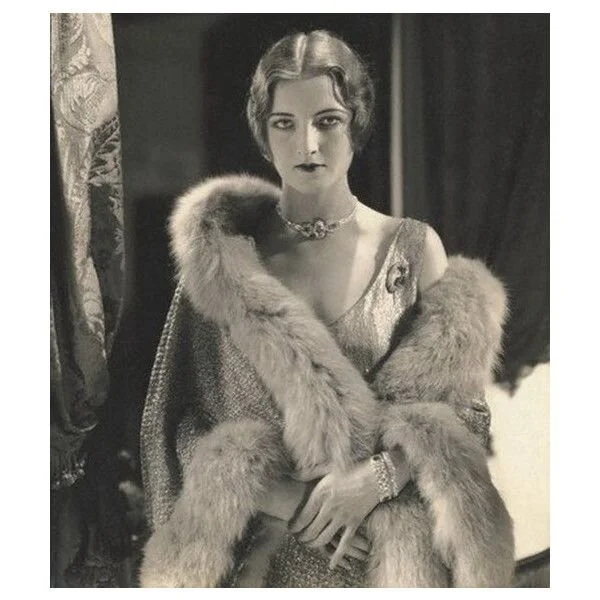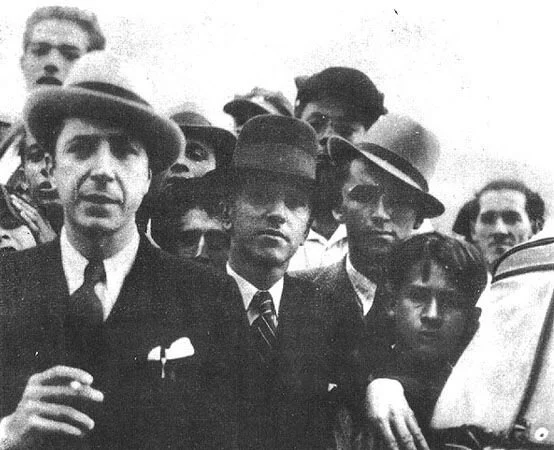Loved by many dancers for its fateful melody and its atmospheric story, the tango “Duelo criollo” departs from the cabaret cityscape of the 1920s to depict a scene that then obsessed the urban mind: the daring knife fights of the roughnecks in the hard scrabble of the outskirts.
Hard times call for straight talk, and the early tangos by Enrique Santos Discépolo deliver the goods with their unflinching pictures of desperation. “Yira, yira,” the greatest song of his early phase, wields its trashcan lid of street slang like a shield against sentimentality, conjuring up a grim humor that borders on the horrifying.
When it comes to the history of popular music, we can trace how authors played with various trends and crosscurrents of the times. And at a certain point, we can observe that the biggest influence on the tango was in fact the tango itself. The tango “Zorro gris” provides an interesting case in point.
We usually think of that iconic tune “La cumparsita” as the most famous tango of them all, holding as it does the honor spot as the last song of the night played for dancing in modern milongas. But perhaps the only tango more widely recorded and more widely known in its heyday is ironically the one which, as a rule, is never played at milongas now—the 1927 song “Adios, muchachos.”
The 1935 film El día que me quieras is not just famous for its title number: the song “Volver” also stands among the all-time classic tangos of the silver screen. Carlos Gardel’s performance of the song shows off his unmistakable phrasing, and the clear, moving, effortless tone of his voice carries the melody at its very best.
The great Argentine folk singer and author Atahualpa Yupanqui worked in a country tradition that ran parallel to the downtown nightclub culture of the tango, but he made a crossover hit when he added his music to a gaucho poem written in the 1930s by Uruguayan poet and voice actor Romildo Risso.
The tango “Dime mi amor” might seem like the prototypical popular song. And that’s because, with its sentimental mood of hopeful simplicity, it was created to represent on stage precisely such a showtune, in the 1941 movie Yo quiero ser bataclana (I Want to Be a Showgirl), starring the great comic actress Niní Marshall.
Penned in 1911 by the budding pianist and composer Rosita Melo (who was just fourteen), “Desde el alma” was a hit just at the dawn of there being such a thing. It circulated in the days before modern copyright had been established, and won its composer attention as she advanced through her studies and early performing career.
Like some other lyrics of the 1940s penned by the great Enrique Cadícamo, these words for Juan Carlos Cobián’s tune “Shusheta” turn back to the characters, images, and themes of the early days of the tango, showing a tender irony along with a certain ambivalence.
The beautiful tango “Yuyo verde” offers a clear example of the highly emotional atmosphere Homero Expósito was able to conjure up with his impressionistic style of songwriting.
This 1937 tango from the Cadícamo-Cobián duo—the songwriters who also joined forces for “Nostalgias” and “Los Mareados,” among others—conjures up a melancholy scene of the docks shrouded in mist…
By the latter 1940s, tango had grown into the voice of the people in its own pictures, capable of sounding the depths of experience with almost no imagery at all, just a melody and a message of raw emotion. The song “Gracias” is one such example…
With the 1924 hit “Suerte loca,” Francisco García Jiménez showed how well a tango could work with clever extended metaphor, and elevated the genre into cerebral territory that only witty poetry occupied at the time.
Considered one the early masterpieces among tango lyrics, the lunfardo-heavy “Mano a mano” is perhaps the most famous work of Celedonio Flores—and a song with its own controversies too.
This week we turn to the famous tango “Tinta roja,” another highly impressionistic and nostalgic song, whose details evoke the old neighborhood life suffused in the inevitable sepia tones of the past.
Homero Expósito’s lyrics for the 1943 tango “Percal” offer a fine example of how tangos “talk to each other” across the decades. The impressionistic story in the song blossoms out of a single word—percale, the smooth cotton weave used for modest dresses in the early 1900s…
If tango lyrics collectively comprise a kind of epic soap opera, then that poem’s opening chapter centers on the 1920 tango “Milonguita.”
Lyricist Francisco García Jiménez was an early innovator in tango lyrics, elevating their style with his refined technique, poignant sensibility, and greater range of lyrical devices.
The romantic tango “Esta noche de luna” was among the biggest hits of 1943, overwhelming the charts with its infectious operatic melody and its pure expression of desire.
With its story of traveling to an abandoned house, and its imagery of snow and rose bushes, Horacio Sanguinetti’s lyric for the tango “Nada” evokes the scenery of Argentina’s interior…



















